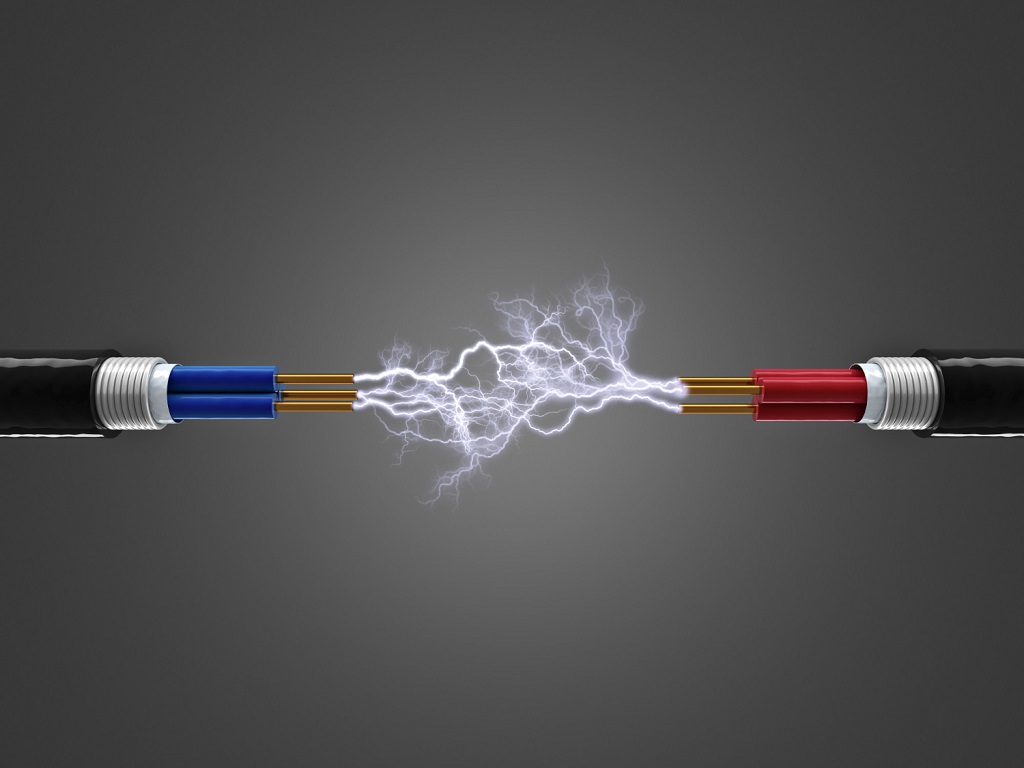In the ever-evolving world of cryptocurrencies, understanding the concept of a mainnet is crucial. It’s the beating heart of any blockchain project, the network where actual transactions take place on a distributed ledger. But what exactly is a mainnet, and why is it so important in the crypto ecosystem? Let’s delve into the details.
Table of Contents
Cryptocurrency Basics

Understanding Cryptocurrency
Cryptocurrency is a digital or virtual form of currency that uses cryptography for security. It operates independently of a central bank and is based on blockchain technology, which supports its decentralized nature and ensures transparency.
The Role of Blockchain Technology
Blockchain technology is the backbone of cryptocurrency. It’s a distributed ledger that records all transactions across a network of computers. The decentralization, security, and transparency provided by blockchain technology are what make cryptocurrencies like Bitcoin and Ethereum possible.
Understanding Mainnet

Defining Mainnet
A mainnet is the primary network for blockchain transactions. It’s where the functionalities of any given cryptocurrency are executed in full. When a cryptocurrency transaction takes place, it happens on the mainnet.
How Mainnet Works
Mainnets function by following the protocol of the blockchain they are part of. They allow users to send and receive digital currency and run smart contracts. Every transaction on a mainnet is permanent and visible to anyone who wishes to view it.
The Role of Mainnet in the Crypto Ecosystem
Mainnets are crucial in the crypto ecosystem as they are the final product of blockchain projects. They demonstrate the real-world functionality and utility of a given cryptocurrency. Without a functioning mainnet, a cryptocurrency would be nothing more than a theoretical project.
When a blockchain project is under development, it’s usually built and tested in a different environment known as a testnet. The testnet allows developers to experiment and debug without risking actual assets. Once the project is ready for real-world use, it transitions from the testnet to the mainnet. This transition often has a positive impact on the associated cryptocurrency’s value as it signifies the project’s readiness for real-world use.
Mainnet vs Testnet

Understanding Testnet
A testnet is an alternative blockchain used solely for testing. It’s a sandbox environment where developers can experiment without risking actual assets.
Differences Between Testnet vs Mainnet
While mainnets and testnets are both integral parts of the blockchain environment, they serve different purposes.
Mainnet
- Purpose: The mainnet is the main network where actual transactions take place. It’s the live, fully functional blockchain where the real value tokens are used.
- Token Value: Tokens on the mainnet have real value. They are the actual cryptocurrency, like Bitcoin or Ethereum.
- Risk: Since real value tokens are used on the mainnet, there’s a financial risk involved. If a transaction goes wrong or a smart contract fails, real money is lost.
- Use Cases: The mainnet is used for all real-world applications of the blockchain. This includes everything from financial transactions to the execution of smart contracts.
Testnet
- Purpose: The testnet is an alternative network that developers use for testing. It’s a sandbox environment where new strategies, algorithms, and smart contracts can be tested without risking actual assets.
- Token Value: Tokens on the testnet have no real-world value. They are used purely for testing purposes.
- Risk: There’s no financial risk involved with using the testnet. If a test transaction fails or a smart contract doesn’t work as expected, no real money is lost.
- Use Cases: The testnet is used for testing new features, smart contracts, or upgrades to the network. It allows developers to experiment and debug in a risk-free environment.
Here’s a comparison chart to illustrate these differences:
| Mainnet | Testnet | |
|---|---|---|
| Purpose | Main network for real transactions | Testing network for experimentation |
| Token Value | Real value | No real-world value |
| Risk | Financial risk involved | No financial risk |
| Use Cases | Real-world applications | Testing new features and upgrades |
Understanding the differences between a mainnet and a testnet is crucial for anyone involved in the development or use of blockchain technologies. While they serve different purposes, both are essential for the successful operation and evolution of a blockchain network.
The Transition from Testnet to Mainnet
The transition from testnet to mainnet is a significant step in a blockchain project’s life cycle. It signifies that the project is ready for real-world use. This transition often has a positive impact on the associated cryptocurrency’s value.
Notable Mainnet Launches

1. Bitcoin (2009): The first and most notable mainnet launch was Bitcoin, which went live in 2009. This marked the birth of the first decentralized cryptocurrency and introduced the concept of blockchain technology to the world.
2. Ethereum (2015): Ethereum’s mainnet launch in 2015 was another significant event in the crypto world. Ethereum introduced the concept of smart contracts, which are self-executing contracts with the terms of the agreement directly written into code.
3. Cardano (2020): Cardano launched its Shelley mainnet in 2020, which introduced a new level of decentralization to its platform by allowing users to stake their ADA tokens and participate in the network’s consensus.
4. Polkadot (2020): Polkadot, a multi-chain platform that allows different blockchains to interoperate, launched its mainnet in 2020. This was a significant step towards a more interconnected blockchain ecosystem.
5. Iron Fish (2023): Iron Fish, a privacy-focused cryptocurrency, launched its mainnet in 2023. The project aims to provide enhanced privacy features for transactions, making it a significant development in the realm of privacy-centric cryptocurrencies. Despite the successful launch and listing on reputable exchanges like Gate.io, the initial price performance did not meet the expectations of some participants.
These mainnet launches have each marked significant milestones in the development of the crypto world, introducing new features and capabilities to the blockchain technology landscape. Each launch represents the culmination of development work and the beginning of a new phase of growth and adoption for these projects.
How to Participate in a Mainnet

Participating in a mainnet involves interacting with the blockchain network in various ways. Here are the steps you can take to participate in a mainnet:
1. Acquire the Cryptocurrency: The first step to participate in a mainnet is to acquire the cryptocurrency of the blockchain network you’re interested in. This can be done through a cryptocurrency exchange. It’s important to do your research and choose a reputable exchange that supports the cryptocurrency you’re interested in.
2. Set Up a Wallet: Once you’ve acquired the cryptocurrency, you’ll need a wallet to store it. A wallet can be a software application or a hardware device that allows you to securely store, send, and receive cryptocurrencies. Make sure to choose a wallet that supports the cryptocurrency you’ve acquired.
3. Interact with the Network: With the cryptocurrency in your wallet, you can now interact with the mainnet. This could involve making transactions, such as sending and receiving cryptocurrency, or it could involve more complex interactions like executing smart contracts, if the blockchain supports it.
4. Participate in Network Consensus: Some blockchains allow users to participate in the network consensus. This could involve staking your cryptocurrency, where you lock up your tokens for a certain period to help secure the network and in return, you earn rewards. Or, it could involve running a node, where you help validate and relay transactions on the network.
5. Engage with the Community: Many blockchain projects have vibrant communities where users can discuss the project, share ideas, and get help. Participating in these communities can be a great way to learn more about the project and contribute to its development.
Remember, participating in a mainnet comes with responsibilities. You’re interacting with a live network where transactions have real-world value. Always make sure to keep your private keys secure and be aware of the potential risks. As with any investment, it’s important to do your research and understand what you’re getting involved with.
Mainnet Crypto Conference
Messari Mainnet

One of the most notable events in the crypto world is the Mainnet conference by Messari. The Mainnet 2023 conference is set to take place from September 20 to 22 in New York. This event is a significant gathering of crypto enthusiasts, investors, and policymakers, providing insider access to the latest developments in the crypto world. The conference is known for its substantive conversations and is a platform where the brightest minds in crypto convene to discuss the future of the industry. The 2023 iteration of Mainnet will donate a percentage of its profits to organizations pushing for common-sense crypto regulation in Washington, D.C.
Consensus by Coindesk
Consensus is one of the world’s largest, longest-running, and most influential gatherings in the cryptocurrency, blockchain, and Web3 community. Organized by CoinDesk, Consensus brings together developers, investors, founders, brands, policymakers, and more from all sides of the crypto world. The event is known for its hard-hitting conversations with visionary speakers and hands-on workshops aimed at solving industry challenges.
Consensus 2024 is set to take place from May 29 to June 1 in Austin, Texas. The event is a primary forum where the industry comes together to discuss the most pivotal matters of the day, highlight the biggest successes, and debate the most critical conversations. It’s an opportunity to be part of the most important conversation in crypto and Web3.
The conference covers a wide range of topics, from the future of finance and investing to developing and building within crypto, mainnet, blockchain, and Web3. It also explores the future of crypto policy and regulations with industry and government leaders, and delves into all things related to the ownership economy, NFTs, the metaverse, brand building, DAOs, and more.
Future of Mainnets
As blockchain technology continues to evolve, so too will mainnets. Here are some potential trends and developments we might see in the future:
1. Increased Efficiency: As technology advances, we can expect mainnets to become more efficient. This could involve faster transaction times, lower fees, and less energy consumption. Blockchain developers are continually working on new methods and algorithms to improve the efficiency of their networks.
2. Greater Scalability: Scalability is one of the biggest challenges facing blockchain networks today. As the number of users and transactions on a network increases, it can become slower and more expensive to use. Future mainnets will likely feature advanced scalability solutions, allowing them to handle a larger number of transactions quickly and cheaply.
3. Enhanced Security: Security is a top priority in the crypto world. Future mainnets will likely feature more robust security measures to protect against hacks, fraud, and other types of cybercrime. This could involve advanced cryptographic techniques, improved consensus algorithms, and more secure wallet options.
4. Interoperability: Interoperability, the ability for different blockchain networks to interact and share information, is a key trend in the blockchain space. Future mainnets may be designed with interoperability in mind, allowing for seamless communication between different blockchains. This could open up new possibilities for cross-chain collaborations and multi-chain applications.
5. More Decentralization: Decentralization is a core principle of blockchain technology. However, some networks are more decentralized than others. In the future, we may see a trend towards greater decentralization, with more users participating in network consensus and more nodes distributed around the world.
6. Regulatory Compliance: As blockchain technology becomes more mainstream, regulatory compliance will become increasingly important. Future mainnets may include features designed to comply with regulatory requirements, such as identity verification, transaction reporting, and anti-money laundering measures.
Upcoming Mainnets
Base by Coinbase
We’ve detailed…
— Base 🛡️ (@BuildOnBase) June 29, 2023
👉 How we’re secured by the OP stack
👉 Our experience with both internal and external audits
👉 The development of our open-source monitoring tool
👉 What it means to launch mainnet with this security first mindset
Conclusion
Understanding mainnets is crucial for anyone involved in the world of cryptocurrencies. These networks serve as the backbone of all transactions and activities within a given blockchain. They are the final product, the realization of all the testing and development that takes place in the testnets.
The differences between mainnets and testnets are significant, with the former being the live, operational version of the blockchain where real transactions occur, and the latter being a sandbox for developers to experiment and troubleshoot.
Notable mainnet launches, such as Ethereum, Bitcoin, and more recently Ironfish, have shaped the crypto landscape. Despite the initial disappointment in the price performance of Ironfish after its mainnet launch, it’s important to remember that the true value of a cryptocurrency is not just its price, but also its technology, community, and potential for future growth.
Participating in a mainnet launch can be an exciting opportunity, but it’s not without its risks. It requires due diligence, understanding of the project, and sometimes a bit of technical know-how.
Looking ahead, the future of mainnets is promising. With advancements in technology, we can expect to see mainnets that are more efficient, scalable, secure, and interoperable. As blockchain technology continues to evolve and mature, mainnets will undoubtedly play an increasingly important role in the digital economy.
In the world of crypto, knowledge is power. Whether you’re a developer, investor, or just a curious observer, understanding mainnets will give you a deeper insight into the inner workings of blockchain technology and its potential to revolutionize our world.
FAQs
What is a mainnet in cryptocurrency?
A mainnet is the primary network for blockchain transactions. It’s where the functionalities of any given cryptocurrency are executed in full.
What is the difference between a mainnet and a testnet?
While mainnets handle real transactions and operate with the actual cryptocurrency, testnets are for testing purposes and use worthless tokens.
How can I participate in a mainnet?
Participating in a mainnet involves holding the blockchain project’s tokens and interacting with its network. This could mean making transactions, staking tokens, or running a node.
What are some notable mainnet launches?
Notable mainnet launches include Ethereum’s mainnet in 2015 and Cardano’s Shelley mainnet in 2020.
How to add Polygon Mainnet to MetaMask?
Open MetaMask and click on the Network selection dropdown.
Click on “Custom RPC”.
Enter the following details:Network Name: Polygon Mainnet
New RPC URL: https://rpc-mainnet.maticvigil.com/
Chain ID: 137
Currency Symbol (optional): MATIC
Block Explorer URL (optional): https://explorer.matic.network/
Click “Save”. The Polygon Mainnet should now be available in your MetaMask.
How to add BSC Mainnet to MetaMask?
Open MetaMask and click on the Network selection dropdown.
Click on “Custom RPC”.
Enter the following details:Network Name: BSC Mainnet
New RPC URL: https://bsc-dataseed.binance.org/
Chain ID: 56
Currency Symbol (optional): BNB
Block Explorer URL (optional): https://bscscan.com/
Click “Save”. The BSC Mainnet should now be available in your MetaMask.
How to transfer Pi to mainnet?
Transferring Pi to the mainnet involves a few steps, as outlined in the Pi Network’s whitepaper:
Active Mining: The prerequisite for any rewards, including the lockup reward, is that the Pioneer must be actively mining. Without mining in the first place, there will be no rewards for any inactive mining sessions, even if Pi is locked up.
Lockup Reward: Pioneers have the opportunity to voluntarily lock up their Pi to earn the right to mine at a higher rate. The lockup reward is positively associated with the contribution to the lockup, i.e., the duration of the lockup time period (Lt) and the amount locked up. However, the lockup amount is accounted for by the percentage of a Pioneer’s total Pi mined (Lp). The maximum Pi that a Pioneer can lock up is twice as much as their Mainnet Balance that got transferred from their prior mining in the mobile app (Lb).
Mining Sessions: Log(N) offers a higher lockup incentive to Pioneers who have a long mining history and presumably a large transferable balance to lock up.
Systemwide Base Mining Rate: B in Mainnet mining is calculated in real time and dynamically adjusted based on a yearly supply cap. Given a yearly supply limit, it is impossible to keep a constant B like in the pre-Mainnet period because it’s unpredictable how much each Pioneer mines and how many Pioneers are actively mining during a period of time.


